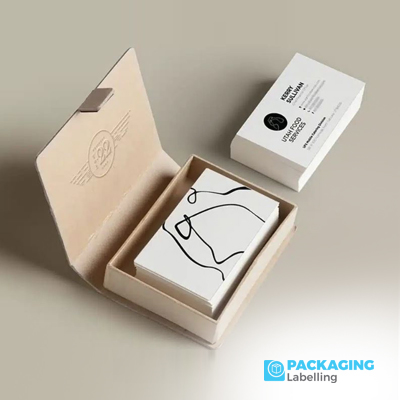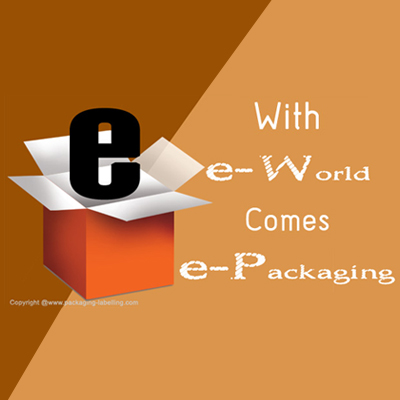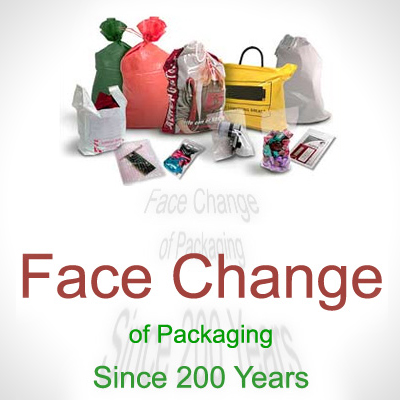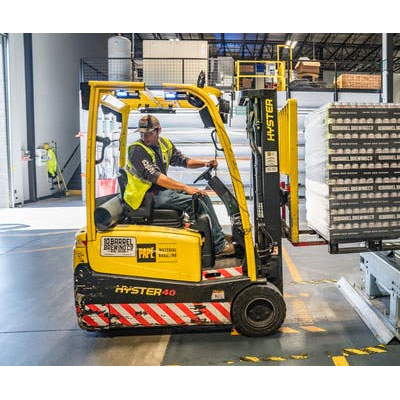The Impact of Smart Packaging Technologies on Food & Beverage Industry Growth

Smart packaging technologies have revolutionized the food and beverage industry, offering a myriad of benefits that contribute significantly to its growth and development. Here's a detailed exploration of how these technologies are impacting the industry:
1. Enhanced Product Safety and Quality
Smart packaging technologies have revolutionized the food and beverage industry by integrating sensors and indicators that continuously monitor various parameters such as temperature, humidity, and gas composition. These sensors are embedded within packaging materials or incorporated into labels, caps, or seals, allowing for real-time data collection throughout the product's lifecycle.
One of the primary benefits of these sensors is their ability to ensure enhanced product safety and quality. For example, in perishable food items like dairy products or fresh produce, maintaining specific temperature and humidity levels is critical to prevent spoilage and microbial growth. Smart packaging sensors constantly monitor these conditions and alert manufacturers and distributors immediately if there are any deviations from the optimal range. This proactive monitoring not only helps in preserving product freshness but also reduces the risk of contamination, thereby improving overall food safety standards.
Moreover, smart packaging goes beyond mere monitoring by providing actionable insights to stakeholders. For instance, if a temperature-sensitive product experiences a temperature spike during transportation, the sensors can record this event and provide a detailed log of the temperature fluctuations. Manufacturers can then analyze this data to identify potential weak points in their supply chain or packaging processes, leading to improvements in handling and storage practices.
From a consumer perspective, smart packaging offers transparency and trust-building measures. Freshness indicators or time-temperature indicators (TTIs) on packaging communicate important information to consumers about the product's condition. These indicators change color or display a message when the product has been exposed to unfavorable conditions, indicating a potential decrease in quality or safety. This empowers consumers to make informed decisions about product freshness and shelf life, ultimately reducing food waste at the consumer level.
Additionally, smart packaging technologies enable traceability and accountability across the supply chain. Each package can be assigned a unique identifier, such as an RFID tag or QR code, allowing stakeholders to track the product's journey from production to consumption. This traceability not only helps in identifying and addressing quality issues promptly but also enhances food safety measures by facilitating efficient recall procedures if needed.
In essence, smart packaging's ability to monitor, analyze, and communicate crucial data regarding product conditions plays a pivotal role in enhancing food and beverage safety, quality, and consumer satisfaction. By leveraging these technologies, the industry can mitigate risks, improve operational efficiency, and build stronger relationships with consumers based on transparency and trust.
2. Extended Shelf Life
Active packaging technologies, including oxygen scavengers and moisture absorbers, play a crucial role in extending the shelf life of perishable food and beverage products. These innovative solutions actively interact with the environment inside the packaging to create optimal conditions that preserve product freshness and quality over an extended period.
For perishable items like fruits, vegetables, and dairy products, maintaining the right balance of oxygen, moisture, and other gases is essential to prevent spoilage and microbial growth. Oxygen scavengers are substances incorporated into packaging materials that absorb oxygen molecules, reducing the oxygen concentration within the package. This process is particularly beneficial for products sensitive to oxidation, such as fats, oils, and certain vitamins. By minimizing oxygen exposure, oxygen scavengers help in preserving flavors, colors, and nutritional content, thus extending the product's shelf life.
Similarly, moisture absorbers are components that actively absorb excess moisture within the packaging environment. Excessive moisture can lead to microbial growth, mold formation, and texture degradation in food products. Moisture absorbers maintain optimal humidity levels, preventing moisture-related issues and enhancing product stability. This is especially beneficial for items like baked goods, snacks, and confectionery products that are susceptible to moisture-induced spoilage.
The impact of active packaging technologies on extending shelf life goes beyond product preservation. It also contributes to improving supply chain efficiency and reducing food waste. By extending the product's shelf life, manufacturers can optimize distribution timelines, reduce the frequency of restocking, and minimize the risk of products reaching their expiration dates before sale. This leads to cost savings, improved inventory management, and enhanced sustainability within the supply chain.
Moreover, extended shelf life benefits consumers by offering them fresher, higher-quality products for a longer duration. Consumers can purchase perishable items with confidence, knowing that they will remain fresh and safe for consumption even after a considerable period. This reduces the likelihood of premature disposal or spoilage at the consumer level, contributing to overall food waste reduction initiatives.
Active packaging technologies such as oxygen scavengers and moisture absorbers play a significant role in extending the shelf life of perishable food and beverage products. By creating optimal packaging environments, these technologies mitigate spoilage risks, enhance product quality, improve supply chain efficiency, and promote sustainability across the industry.
3. Improved Traceability and Transparency
Smart packaging solutions have revolutionized traceability and transparency in the food and beverage industry by incorporating advanced technologies such as RFID tags, QR codes, and NFC (Near Field Communication) technology. These innovations enable seamless tracking of products throughout the supply chain, providing stakeholders and consumers with access to detailed information about the product's journey from production to consumption.
RFID tags are small electronic devices that store unique identification data and can be embedded in packaging materials or attached to product labels. They use radio frequency signals to transmit information to RFID readers, allowing for real-time tracking and inventory management. QR codes, on the other hand, are two-dimensional barcodes that can be scanned using smartphones or dedicated scanning devices. They contain encoded information such as product details, batch numbers, and manufacturing dates, offering instant access to relevant data.
NFC technology adds another layer of interactivity by enabling communication between NFC-enabled devices and smart packaging. Consumers can simply tap their smartphones on NFC-enabled packaging to access product information, promotions, and interactive content. This seamless interaction enhances the consumer experience while providing valuable insights into product authenticity and provenance.
The implementation of these technologies enhances traceability by providing a digital footprint of
each product's journey. Stakeholders can track the product's origin, processing methods, transportation routes, storage conditions, and handling procedures in real time. This level of visibility improves supply chain management, reduces the risk of counterfeit products, and enables swift response to quality or safety issues through targeted recalls.
Moreover, smart packaging solutions facilitate transparency by empowering consumers to make informed purchasing decisions. By scanning RFID tags or QR codes, consumers can access a wealth of information, including:
1. Product Origin: Details about where the product was sourced, including information about farms, fisheries, or manufacturing facilities.
2. Processing Methods: Insights into how the product was processed, packaged, and handled during production.
3. Certifications: Verification of certifications such as organic, non-GMO, fair trade, or sustainable practices, providing assurance of product quality and ethical sourcing.
4. Expiration Dates: Clear visibility into product expiration dates, ensuring consumers purchase fresh and safe-to-consume items.
This transparency builds consumer confidence in product authenticity, sustainability practices, and ethical sourcing. It fosters trust between consumers and brands, leading to enhanced brand loyalty and positive brand perception.
In conclusion, smart packaging solutions leveraging RFID tags, QR codes, and NFC technology improve traceability and transparency in the food and beverage industry. These technologies empower stakeholders and consumers with access to comprehensive product information, driving accountability, sustainability, and consumer trust in an increasingly complex supply chain ecosystem.
4. Personalized Consumer Engagement
Interactive packaging elements, including augmented reality (AR) labels and smart QR codes, have revolutionized consumer engagement in the food and beverage industry. These innovative technologies create dynamic opportunities for personalized interactions between brands and consumers, leading to enhanced brand experiences, increased customer loyalty, and valuable insights for targeted marketing strategies.
Augmented reality labels transform traditional packaging into interactive platforms by overlaying digital content, such as videos, animations, product information, or games, onto physical packaging surfaces. Consumers can access this content by scanning AR-enabled packaging using smartphones or tablets. For example, a beverage brand may use AR labels to showcase immersive videos highlighting product features, production processes, or recipe ideas, enhancing consumer engagement and brand storytelling.
Similarly, smart QR codes provide instant access to customized content, promotions, and nutritional information directly on consumers' smartphones. Brands can leverage QR codes on packaging to deliver personalized messages, discounts, or loyalty rewards, creating a seamless and interactive shopping experience. Consumers can scan QR codes to access product details, ingredient lists, allergen information, and nutritional facts, empowering them to make informed purchasing decisions.
The level of interactivity offered by these technologies goes beyond conventional marketing approaches, allowing brands to tailor content based on consumer preferences, demographics, and purchasing behaviors. By analyzing consumer interactions with AR labels or QR codes, brands gain valuable insights into consumer preferences, product usage patterns, and engagement metrics. This data-driven approach enables brands to refine their marketing strategies, launch targeted promotions, and develop personalized product offerings that resonate with their target audience.
Moreover, interactive packaging elements facilitate market research and consumer behavior analysis. Brands can conduct surveys, collect feedback, and gather insights directly from consumers through interactive experiences. This real-time data allows brands to understand consumer sentiment, identify emerging trends, and adapt their marketing strategies accordingly, fostering a customer-centric approach to product development and brand management.
Overall, personalized consumer engagement through interactive packaging elements enhances the overall brand experience, fosters brand loyalty, and drives customer retention. By leveraging AR labels, smart QR codes, and other interactive technologies, brands can create memorable and meaningful interactions with consumers, leading to increased brand visibility, positive brand associations, and sustainable growth in the competitive food and beverage market.
5. Sustainability and Waste Reduction
Smart packaging technologies are at the forefront of promoting sustainability and waste reduction in the food and beverage industry. These innovative solutions incorporate a range of features and practices aimed at minimizing environmental impact and enhancing eco-friendly operations.
One of the key sustainability benefits of smart packaging is intelligent portion control. Packaging designs with built-in portion control mechanisms help consumers manage their food consumption more effectively, reducing overeating and food waste. By providing pre-measured portions or encouraging portion-conscious choices, smart packaging contributes to reducing excess food production and the associated environmental footprint.
Furthermore, the use of biodegradable and compostable materials in smart packaging enhances sustainability efforts. Biodegradable packaging materials, derived from renewable sources like plant-based plastics or compostable polymers, break down naturally over time, reducing landfill waste and environmental pollution. Smart packaging solutions leverage these materials to minimize the environmental impact of packaging disposal and promote circular economy practices.
Smart packaging also integrates smart recycling systems, such as color-coded recycling labels or instructions for proper disposal, to encourage responsible recycling behaviors among consumers. Clear labeling and guidance on recycling procedures help consumers segregate packaging materials effectively, facilitating recycling and reducing contamination in recycling streams. This contributes to higher recycling rates, resource conservation, and reduced reliance on virgin materials for packaging production.
Moreover, data analytics-driven optimization of packaging designs plays a significant role in sustainability initiatives. By analyzing data on packaging usage, material consumption, and transportation logistics, smart packaging technologies enable manufacturers to develop optimized packaging solutions that minimize resource usage while maintaining product integrity. This includes lightweighting packaging materials, optimizing package sizes to reduce empty space, and adopting efficient distribution strategies to minimize carbon emissions.
Overall, smart packaging technologies drive sustainability and waste reduction by promoting intelligent portion control, incorporating biodegradable materials, implementing smart recycling systems, and optimizing packaging designs based on data analytics. These initiatives contribute to a more sustainable food and beverage industry, aligning with global efforts to reduce environmental impact, conserve resources, and promote responsible consumption and production practices.
6. Supply Chain Optimization
The integration of IoT (Internet of Things) devices into smart packaging has revolutionized supply chain management in the food and beverage industry. These IoT-enabled solutions enable real-time monitoring and data collection across various stages of the supply chain, leading to enhanced visibility, cost savings, reduced product losses, and improved operational efficiency.
One of the key benefits of IoT-enabled smart packaging is real-time inventory monitoring. IoT devices embedded in packaging materials or attached to product containers continuously track inventory levels, providing accurate and up-to-date information on stock availability. This real-time visibility helps manufacturers and distributors optimize inventory management, prevent stockouts or overstocking, and streamline replenishment processes, leading to improved supply chain agility and responsiveness to market demands.
Furthermore, IoT devices in smart packaging monitor shipping conditions and logistics routes throughout the product's journey from production facilities to distribution centers and retail outlets. Sensors embedded in packaging collect data on temperature, humidity, light exposure, and other environmental factors that can impact product quality and safety. This data-driven approach allows stakeholders to proactively address potential issues such as temperature fluctuations, storage conditions, or transport delays, minimizing product losses, and ensuring product integrity.
The real-time data collected by IoT devices also facilitates predictive analytics and proactive decision-making. Machine learning algorithms analyze historical data, trends, and patterns to predict potential supply chain disruptions, quality issues, or delivery delays. This proactive approach enables stakeholders to take preventive measures, adjust logistics routes, optimize transportation schedules, and mitigate risks before they escalate, leading to improved supply chain resilience and reliability.
Moreover, IoT-enabled smart packaging contributes to cost savings and operational efficiency. By optimizing inventory levels, reducing product losses, and minimizing waste due to spoilage or damage during transportation, companies can achieve significant cost reductions. The ability to track and trace products in real time also enhances transparency, accountability, and compliance with regulatory requirements, further improving operational efficiency and customer satisfaction.
The integration of IoT devices in smart packaging enhances supply chain optimization by providing real-time visibility, proactive monitoring, predictive analytics, cost savings, and operational efficiency. These data-driven solutions empower stakeholders to make informed decisions, mitigate risks, and optimize supply chain processes, ultimately improving overall performance and competitiveness in the food and beverage industry.
7. Regulatory Compliance and Food Safety Standards
Smart packaging solutions play a vital role in helping food and beverage companies comply with stringent regulatory requirements and industry standards related to food safety, labeling, and quality. These innovative solutions leverage automated monitoring, traceability features, and compliance documentation to ensure that products meet regulatory guidelines, fostering consumer trust and mitigating risks associated with recalls or non-compliance issues.
One of the key benefits of smart packaging in regulatory compliance is automated monitoring of critical parameters such as temperature, humidity, and storage conditions. IoT-enabled sensors embedded in packaging materials continuously collect data throughout the product's lifecycle, ensuring that products are stored and transported under optimal conditions. This real-time monitoring helps companies comply with regulations regarding temperature control, food safety, and quality assurance, reducing the risk of product spoilage, contamination, or degradation.
Smart packaging solutions also enhance traceability, allowing companies to track and trace products throughout the supply chain. Each package is assigned a unique identifier, such as an RFID tag or QR code, which contains essential information about the product's origin, processing methods, expiration dates, and certifications. This traceability feature enables rapid identification and recall of products in case of safety or quality issues, minimizing the impact on consumers and protecting brand reputation.
Furthermore, smart packaging facilitates compliance documentation by automatically capturing and recording data related to product handling, storage, and transportation. This data can be used to generate compliance reports, certificates of analysis, and audit trails, demonstrating adherence to regulatory requirements and industry standards. Automated documentation not only streamlines regulatory compliance processes but also provides a comprehensive record of product history for transparency and accountability.
By leveraging smart packaging solutions, food and beverage companies can demonstrate their commitment to food safety, labeling accuracy, and product quality, enhancing consumer trust and brand reputation. Compliance with regulatory requirements also reduces the risk of costly recalls, legal penalties, and reputational damage associated with non-compliance issues. Overall, smart packaging plays a crucial role in ensuring regulatory compliance, mitigating risks, and maintaining high standards of food safety and quality in the industry.
Future Trends and Innovations
Looking ahead, the food and beverage industry is poised to witness continued advancements in smart packaging technologies. These may include AI-driven packaging optimization, blockchain-based supply chain transparency, sustainable materials innovation, and integration with smart home systems for seamless consumer experiences. Embracing these trends will further drive growth, competitiveness, and sustainability across the industry.
In conclusion, the impact of smart packaging technologies on the food and beverage industry is multifaceted, encompassing safety, quality, sustainability, transparency, and consumer engagement. Embracing these innovations is essential for companies to stay competitive, meet evolving consumer expectations, and contribute to a more efficient and sustainable future.









